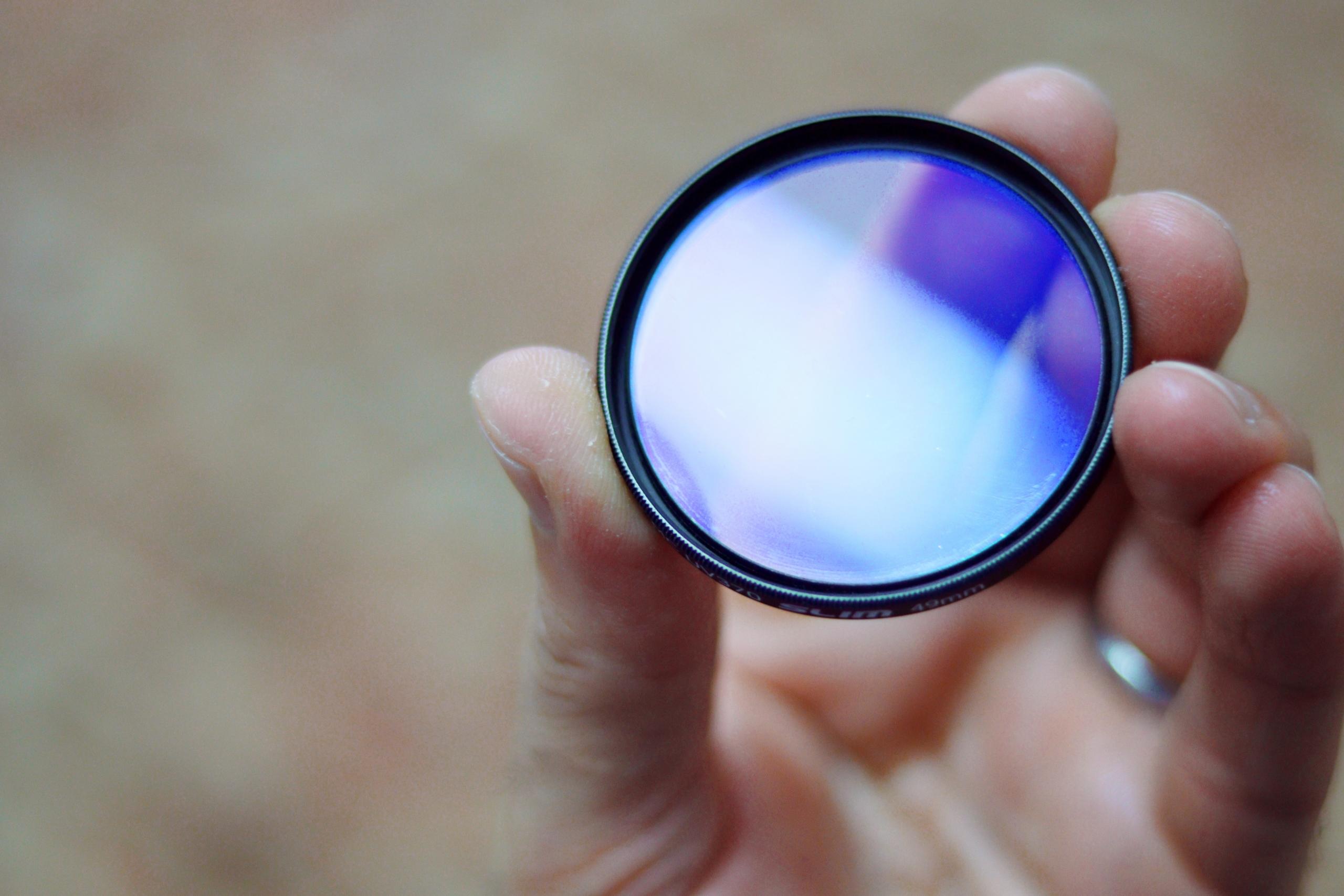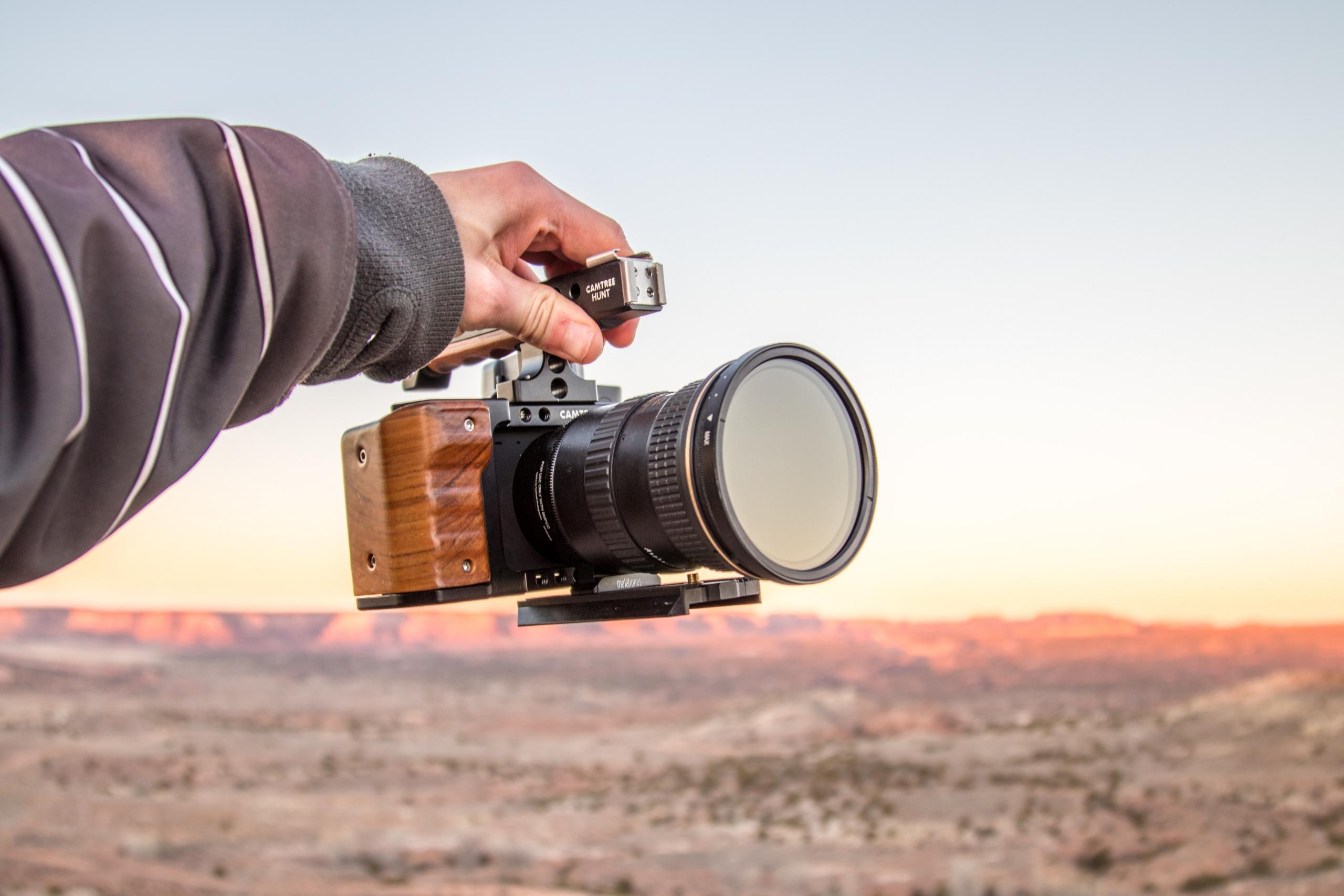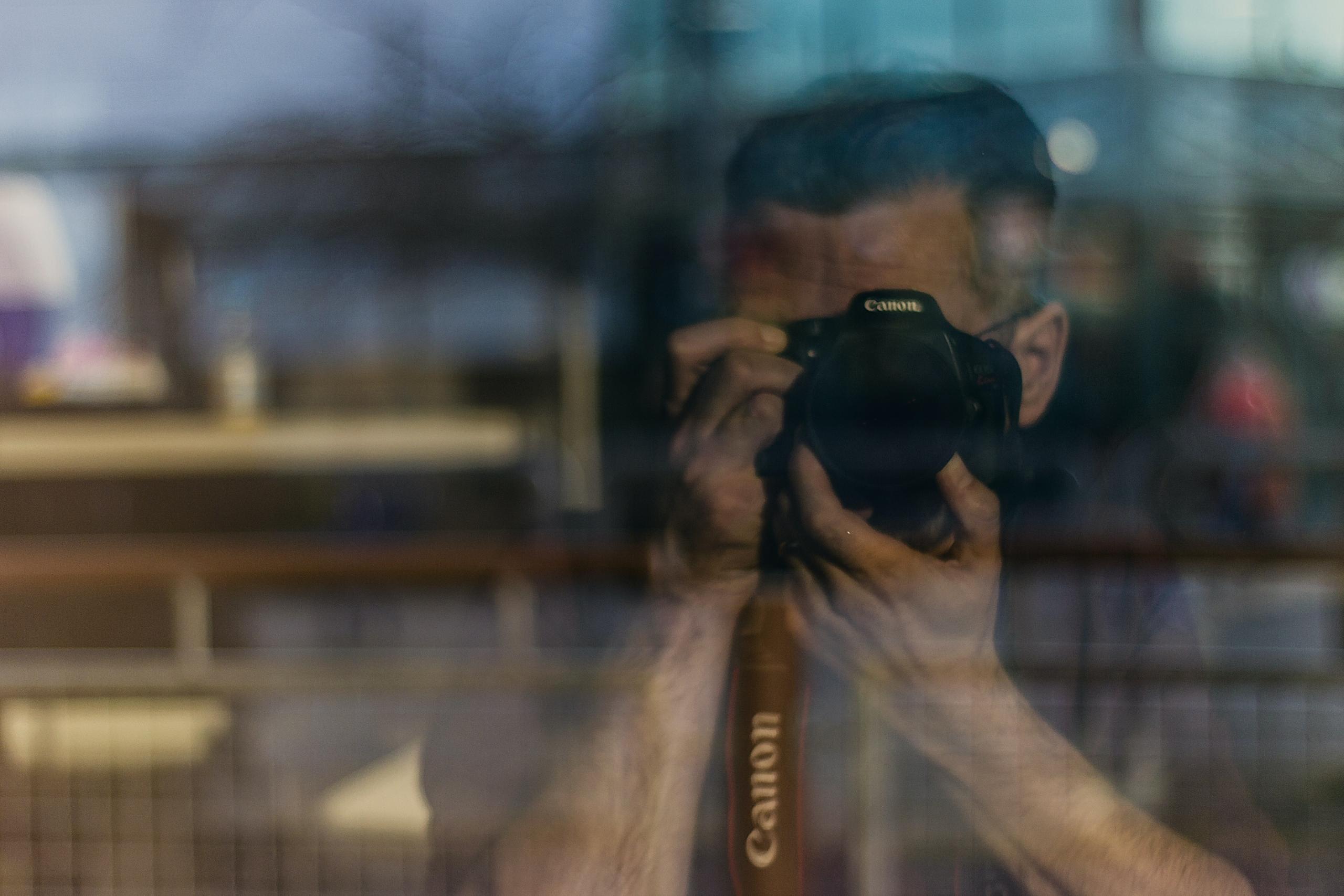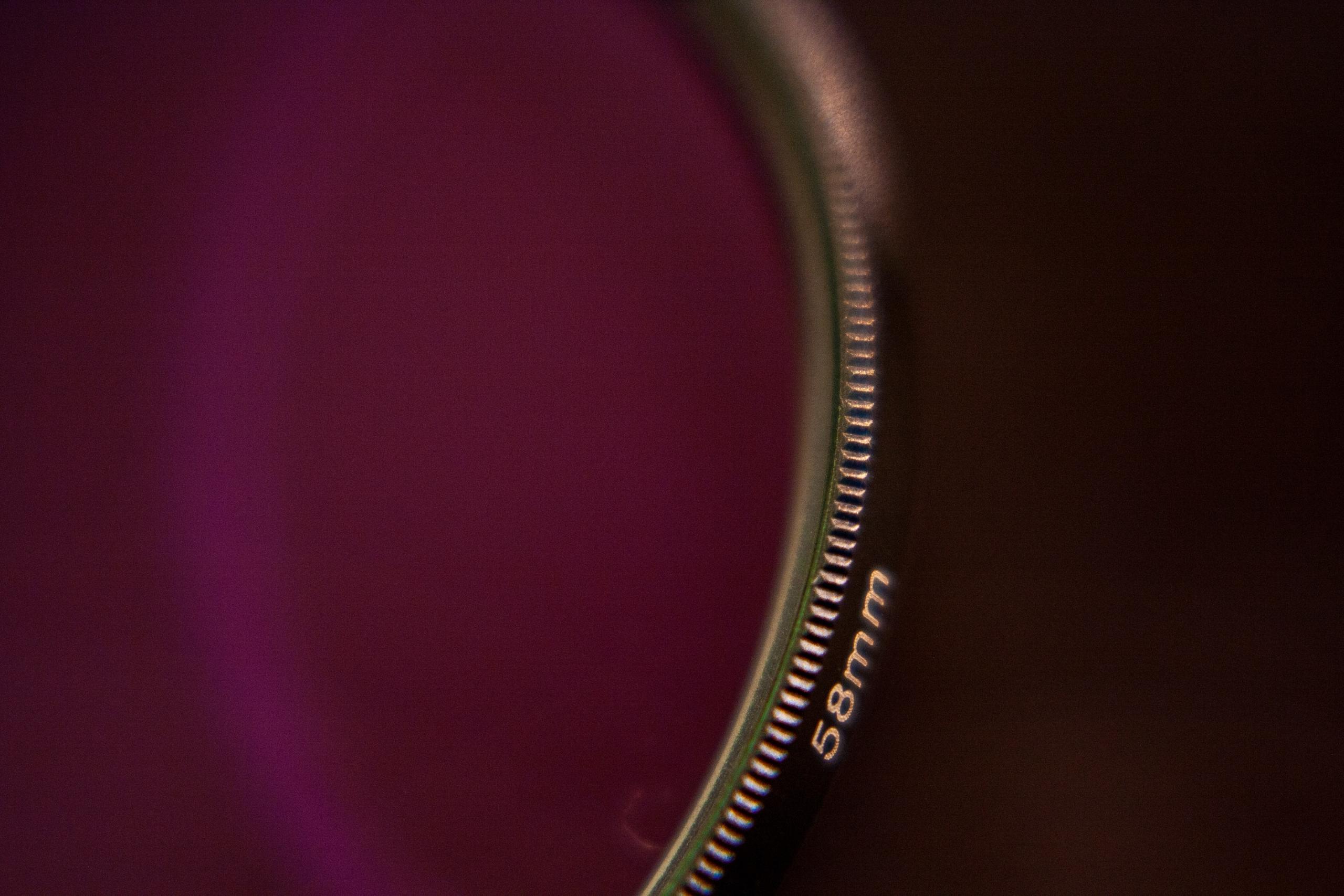Camera lens filters come in all different shapes and sizes, and provide various effects for the photographer.
Lens filters are used by photographers to create different effects, that would perhaps otherwise only be accessible in post-processing software.
As such, they can be valuable tools for setting up exciting and adventurous shoots as a videographer, or even just to take an ordinary shooting like an interview and give it a different feel.
There are many lens filters you can buy, from color correction filters and contrast filters, to diffusion filters, and skylight filters.
In this guide, though, we want to take a closer look at polarizing filters so you can decide whether or not they would be a worthy addition to your camera equipment collection.
But before we can do a deep dive on polarizing filters, we first need to take a step back to understand exactly what they are and what function they serve.


What is a Polarizing Filter?
A polarizing filter is a camera lens filter that photographers use to reduce the harsh effects of glare, remove reflections from surfaces like water, and to saturate certain colours.
As such, it can be an indispensable piece of equipment to have with you when you’re out and about on photo shoots.
The polarizing filter can have a significant impact on your photos.
Take the example of a landscape with flowers in the foreground, mountains in the background, and a muted sky.
A polarizing filter will add dynamic contrast to the image, bringing out the rich colours of the sky, making the flowers in the foreground pop, and minimizing any reflections that may be coming from somewhere in the image.
While you could achieve a similar effect with post-processing software, it would likely take a lot of time and effort to do so.
Sure, you could amp up the saturation using the right software, but what if you can’t afford to splash out on Adobe Photoshop or Lightroom?
Plus, you might not want to spend a lot of your time editing photos after you’ve taken them. If you enjoy being out in the field snapping great shots and then showing them off soon after, a filter can be a wise investment.
Just as different lenses work well for different types of photos, filters have many applications and can enhance your photos depending on how you use them.
There are two main types of polarizing filters - warming and neutral.
The warming polarizing filter will, as it suggests, bring out the warmer tones in an image such as oranges and reds. The neutral filter will bring down the colors and highlight hues of blue and other neutral tones.
To apply the polarizing filter to your camera, you simply need to take the circular filter and apply it to the end of your lens. The convenience of the process is one of the reasons many photographers enjoy using filters.
How to Use a Polarizing Filter

Polarizing filters can be a steep investment, and they can also require a substantial amount of time to learn how to use optimally.
That being said, if you’re willing to put the time and effort in, we believe that they are more than worth your while.
The first thing you need to know to master the polarizing filter is how to attach it to your camera lens.
Fortunately, this is a simple and straightforward process.
With your camera, lens, and filter at the ready, here’s what you need to do:
- Make sure the lens and filter sizes match up, otherwise the filer won’t fit.
- Take the filter and carefully screw it onto the top of the lens
Ok, now you have your filter attached, it should just be a simple case of taking a bunch of photos and hoping for the best, right?
Not quite.
To make sure you get the right effects for your photos, you’ll need to adjust your lens filter on the fly. To do so, all you have to do is twist the filter slowly just as you would to zoom in.
It’s important though that as you do this you pay attention to what’s on your camera’s viewfinder, since this is how the image will look once you take it.
To get the best out of your photos with the polarizing filter, photographers often recommend that you take them at a 90-degree angle to the sun. This will help you get the most out of every image, and masterfully manipulate glare, reflections, and shadows.
If you really want to master the polarizing filter, then you’re going to need to spend many hours practising with it.
Get out there and go on as many photography adventures as you can, making sure that you vary up the conditions with regards to the amount of reflections, sunlight, and more in your shots.
Usually, you’ll find that the best times to reach for the polarizing lens are when you’re dealing with exceptionally bright sunlight or you’re trying to photograph areas with water, as this can cause glare and reflections.
Needless to say, you won’t have as much use out of the polarizing filter when the days get colder and darker in the winter months.
One thing to stay cautious of is that any filter will add an extra layer of glass to your camera, which can increase the risk of lens flare.
You should also steer clear of panoramic shots with the polarizing filter, because the moment you go to stitch the individual images together you’ll notice that each has a slightly different effect.
Plus, wide angle lenses are a no-go with polarizing filters, since the stretched out photo will have various polarized areas contributing to a patchy overall visual.
Polarizing Filter Effects

It’s a good idea to familiarise yourself with the effects of a polarizing filter before you run out and buy one.
Once you know exactly what this type of filter is capable of, you’ll be better able to use it in the right situations and contexts.
It could very well be the case that you don’t have much use for a polazing lens, since you live somewhere with minimal sunlight.
Here are some of the effects you can achieve with a polarizing filter:
Remove Reflections
Sometimes reflections can add profound beauty to an image, and other times they can get in the way of a good photo.
As such, there may be instances when you’re out and about that you want to screw on your polarizing filter in order to take a reflection out of the picture.
This is mostly the case when taking photos of water, or when there’s a window or pane of glass involved in the shot.
For the most part, polarizing filters will get rid of the reflection, though they won’t remove it completely.
Increase Saturation
If you’ve ever used post-processing software before, or even edited photos in your phone, you’re likely very familiar the saturation and the huge impact it can have on your images.
That’s because saturation brings out the color in photos, so you can have brighter skies, more vibrant flowers, and deep blue seas.
Who doesn’t want that?
You of course have to be careful not to overdo this effect, since we all know what an over-saturated photo looks like - and it’s not pretty.
Add Contrast
Contrast is effect that can bring out the detail in an image, and make it look as close to reality as possible.
With the ability to adjust contrast, you can increase the dynamic range of your camera, which will give it enhanced low light performance.
You can also make a certain part of an image stand out by contrasting it with other colors or features around it.
Polarizing Filter Buyer’s Guide
Ok, so now you know just about everything there is to know about polarizing filters, let’s talk money.
What separates an average polarizing filter with a great one?
Let’s find out.
Budget
Your first consideration should of course be your budget.
How much money are you willing to spend on a filter?
Polarizing filters can range from as little as £15 to as much as £300, so you have plenty of options depending on your budget.
Image Quality
With any filter, you want to make sure the image quality is as good as it can be.
While you won’t be able to ascertain this from looking at the lens, it can be a good idea to go through user reviews on various websites to see what the consensus seems to be.
Frame Size
Ideally, you’ll want to find a filter with a thin frame.
Why?
Because this gives you versatility whatever lens you want to use, and because it’s much easier to carry around as part of your camera gear.
More important than the polarizing filter you buy, though, is knowing how to use it. With Superprof, you can find a photography tutor online or in person to practise your skills with and get the most out of a polarizing filter.















